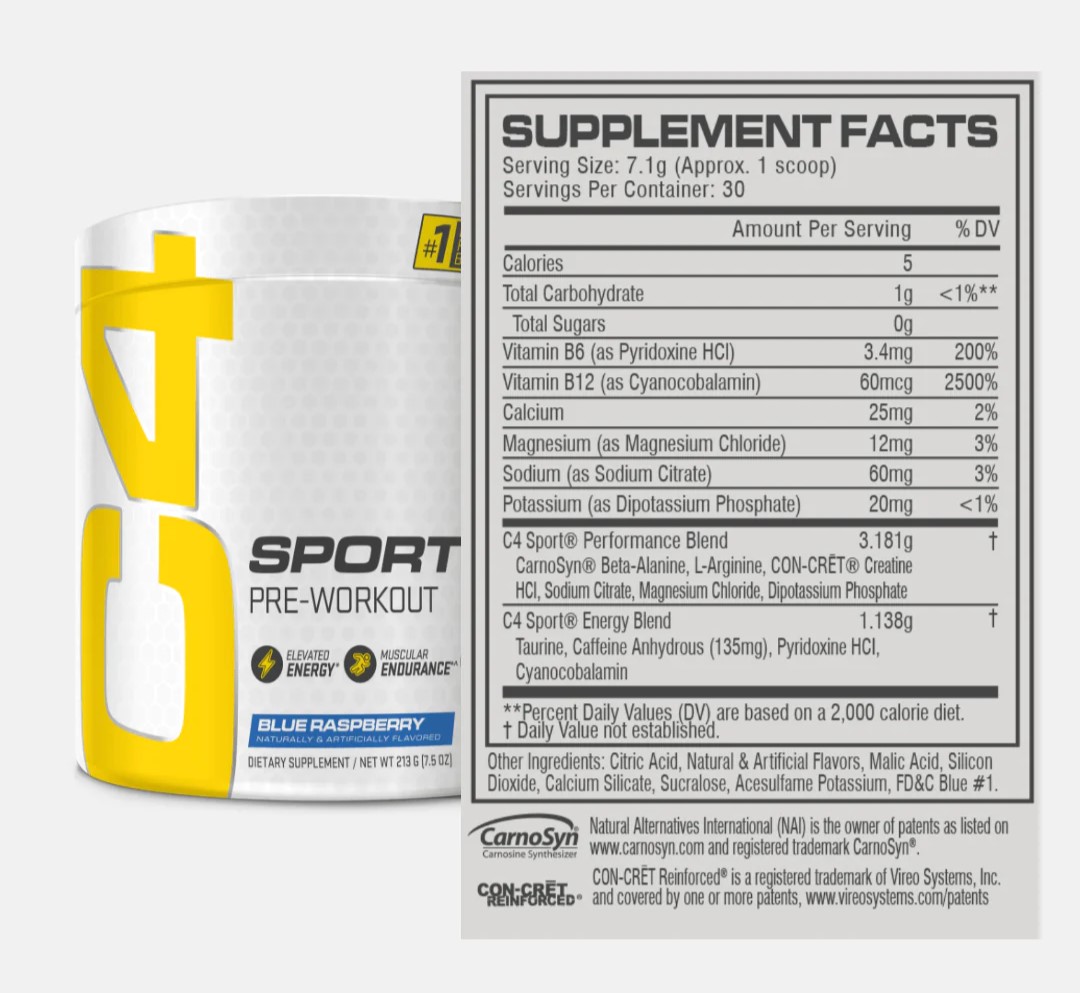

Featured
How To Increase Stamina With Asthma
Modified: January 22, 2024
Learn how to increase stamina and manage asthma symptoms with our featured tips and techniques. Start improving your endurance today!
Introduction
Living with asthma can pose challenges when it comes to physical fitness and stamina. Asthma is a chronic respiratory condition that causes inflammation and narrowing of the airways, leading to symptoms such as shortness of breath, wheezing, and coughing. These symptoms can make it difficult to participate in activities that require endurance and stamina.
However, having asthma does not mean you have to forgo a fulfilling and active lifestyle. With proper management and a strategic approach, it is possible to increase stamina and engage in regular exercise, even with asthma. In fact, regular exercise has been shown to improve lung function, reduce asthma symptoms, and enhance overall physical fitness.
In this article, we will explore the relationship between asthma and stamina, and provide practical tips on how to increase stamina for individuals with asthma. We will discuss the importance of managing asthma symptoms, choosing the right exercise program, and preparing for exercise. Additionally, we will delve into breathing techniques, the role of medication, gradual stamina-building strategies, and the benefits of seeking professional guidance.
Whether you are an athlete with asthma looking to improve your performance or simply aiming to increase your daily stamina, the information presented here will guide you towards a healthier and more active lifestyle. It is important to remember that asthma should not hold you back from achieving your fitness goals; rather, it should serve as a motivator to take control of your health and make informed choices.
Let us now delve into a deeper understanding of asthma, its impact on stamina, and how to effectively manage and improve stamina while living with this condition.
Understanding Asthma and Stamina
Asthma is a chronic respiratory condition that affects the airways, causing inflammation and narrowing. This inflammation leads to various symptoms, including difficulty breathing, wheezing, tightness in the chest, and coughing. These symptoms can significantly impact an individual’s stamina and ability to engage in physical activities.
Stamina, often referred to as endurance, is the ability to sustain physical exertion over a prolonged period of time. It is an important aspect of overall fitness and plays a crucial role in activities such as running, cycling, swimming, and even everyday tasks like climbing stairs or walking long distances.
Individuals with asthma may experience challenges in maintaining their stamina due to several factors. The inflammation and narrowing of the airways can limit the amount of oxygen that reaches the muscles, leading to fatigue and reduced endurance. Additionally, the persistent coughing and wheezing associated with asthma can further deplete energy levels and affect overall stamina.
Understanding the impact of asthma on stamina is crucial for individuals with the condition. It enables them to manage their symptoms effectively, make necessary adjustments to their exercise routines, and take appropriate steps to increase their stamina levels.
By recognizing the relationship between asthma and stamina, individuals can develop strategies to overcome these challenges and engage in activities that promote cardiovascular health and endurance. With proper management and guidance, it is possible to improve stamina while living with asthma.
Now that we have a better understanding of asthma’s effect on stamina, let us explore effective ways to manage asthma symptoms and enhance stamina through regular exercise and other strategies.
Managing Asthma Symptoms
Proper management of asthma symptoms is crucial in improving stamina and reducing the risk of asthma attacks during physical activities. By following a comprehensive asthma management plan, individuals can better control their symptoms and minimize the impact on their stamina. Here are some key strategies to manage asthma symptoms:
- Working with a Healthcare Professional: It is essential to consult with a healthcare professional who specializes in asthma management. They can assess your condition, prescribe appropriate medications, and provide guidance on managing symptoms during exercise.
- Taking Medications as Prescribed: Adhering to prescribed asthma medications is vital for maintaining optimal control of symptoms. This may involve using inhalers, corticosteroids, or other medications that help minimize inflammation and keep airways open.
- Identifying Asthma Triggers: Recognizing and avoiding triggers that can worsen asthma symptoms is crucial. Common triggers include allergens (such as pollen, dust mites, and pet dander), air pollution, cold air, and certain physical activities. Understanding your triggers and taking necessary precautions can help prevent symptom flare-ups.
- Using a Peak Flow Meter: A peak flow meter is a handheld device used to measure how fast an individual can exhale air. Regular monitoring of peak flow readings can provide insights into your lung function and alert you to any changes or potential asthma attacks. This information can guide adjustments in medication or exercise routines.
- Developing an Asthma Action Plan: Working with your healthcare professional to create a personalized asthma action plan is essential. This plan outlines steps to take based on symptom severity, provides guidance on medication usage, and includes emergency contact information. Having a clear plan in place helps manage symptoms effectively.
- Practicing Good Asthma Hygiene: Maintaining overall respiratory health is crucial in managing asthma symptoms. This involves regular hand washing, avoiding exposure to secondhand smoke, getting vaccinated for respiratory illnesses like the flu, and keeping indoor environments clean and free of dust and allergens.
By implementing these strategies, individuals with asthma can better manage their symptoms, reduce the risk of asthma attacks, and make exercise and physical activities more enjoyable and stamina-enhancing.
Importance of Regular Exercise
Regular exercise plays a vital role in maintaining overall health and improving stamina. This holds true for individuals with asthma as well. Despite the challenges that asthma may present, it is important to prioritize physical activity and incorporate it into your daily routine. Here are some key reasons why regular exercise is essential for individuals with asthma:
- Improving Lung Function: Engaging in regular exercise can help improve lung capacity and function. When you exercise, your lungs work harder to provide oxygen to the muscles, which strengthens them over time. This can lead to better control of asthma symptoms and increased stamina for physical activities.
- Strengthening Respiratory Muscles: Exercise, especially aerobic activities, can help strengthen the muscles involved in breathing. By regularly engaging in activities that challenge the respiratory muscles, individuals with asthma can enhance their ability to breathe efficiently and sustain physical exertion for longer periods.
- Reducing Asthma Symptoms: Studies have shown that regular exercise can help reduce the frequency and severity of asthma symptoms. It can improve airway function, decrease inflammation, and enhance overall respiratory health, leading to fewer asthma flare-ups and improved control of symptoms.
- Managing Weight and Preventing Obesity: Regular exercise is crucial for maintaining a healthy weight. Obesity has been linked to worsened asthma symptoms and decreased lung function. By engaging in physical activities, individuals can manage their weight effectively and reduce the potential impact of obesity on asthma.
- Boosting Mood and Mental Well-being: Exercise has been shown to have numerous benefits for mental health. It can help reduce stress, anxiety, and depression, which are common comorbidities with asthma. By improving mental well-being, individuals are better equipped to handle the challenges of managing their asthma symptoms and maintain their motivation to stay active.
It is important to note that not all types of exercise are suitable for individuals with asthma. Certain activities, such as high-intensity or cold-weather sports, may trigger symptoms. Therefore, it is crucial to choose the right exercise program that suits your condition and consult with a healthcare professional or an exercise specialist for guidance.
By incorporating regular exercise into your routine, you can improve lung function, manage asthma symptoms, enhance stamina, and lead a healthier and more fulfilling life, despite living with asthma.
Choosing the Right Exercise Program
When it comes to increasing stamina with asthma, choosing the right exercise program is crucial. Not all exercises are created equal, and certain activities may exacerbate asthma symptoms. It is important to select exercises that are safe, enjoyable, and promote cardiovascular fitness. Here are some considerations when choosing the right exercise program for individuals with asthma:
- Low-Impact Activities: Opt for low-impact exercises that put less stress on the joints and minimize the risk of injury. Examples include walking, swimming, cycling, and using elliptical machines. These activities are gentle on the body and can be easily tailored to your fitness level.
- Avoiding Triggering Factors: Take note of activities that typically trigger your asthma symptoms. If certain exercises, such as running in cold weather or participating in high-intensity sports, worsen your symptoms, it is best to avoid them. Instead, focus on activities that do not elicit asthma flare-ups.
- Gradual Progression: Start slowly and gradually increase the duration and intensity of your workouts. This progressive approach allows your body to adapt and build stamina over time. Avoid pushing yourself too hard, as this may lead to exhaustion and exacerbation of asthma symptoms.
- Interval Training: Consider incorporating interval training into your exercise routine. This involves alternating between high-intensity bursts of activity and periods of rest or lower-intensity exercise. Interval training can be beneficial for improving cardiovascular fitness and building stamina while managing asthma symptoms effectively.
- Warm-Up and Cool-Down: Always include a proper warm-up and cool-down period in your exercise routine. This helps prepare your body for activity and prevents sudden strain on the respiratory system. Warm-up exercises can include gentle stretches and mobility movements, while cool-down exercises can include stretching and deep breathing.
- Monitoring Symptoms: Pay attention to any asthma symptoms that arise during or after exercise. If you experience shortness of breath, wheezing, chest tightness, or persistent coughing, it may be a sign that your exercise program needs adjustments. Consult with a healthcare professional to modify your routine accordingly.
Remember, the goal is to find exercises that challenge you without triggering asthma symptoms. It may be helpful to work with an exercise specialist or a respiratory therapist who can provide personalized guidance and recommend specific exercises suitable for individuals with asthma.
By carefully selecting the right exercise program, taking into account your personal preferences and asthma triggers, you can build stamina, improve fitness levels, and minimize the impact of asthma on your physical activities.
Preparing for Exercise with Asthma
Preparing for exercise with asthma is essential to ensure a safe and enjoyable workout experience. By taking certain precautions and making necessary preparations, individuals with asthma can minimize the risk of symptom flare-ups and maximize their stamina-building efforts. Here are some important steps to consider when getting ready for exercise:
- Consult with Your Healthcare Professional: Before starting any exercise program, it is crucial to consult with your healthcare professional or specialist. They can provide personalized advice, assess your asthma control, and recommend specific precautions or adjustments based on your individual needs.
- Warm-Up Thoroughly: Prior to engaging in any physical activity, spend at least 5-10 minutes warming up. This can include light aerobic exercises such as brisk walking or gentle stretches. Warming up prepares your body for exercise, gradually increases your heart rate, and helps prevent sudden strain on the respiratory system.
- Use Your Asthma Medications: Ensure that you are taking your prescribed asthma medications as directed by your healthcare professional. This may include using a reliever inhaler before exercise to open up the airways and prevent exercise-induced symptoms. Be consistent with your medication routine to maintain optimal control of your asthma.
- Have Your Inhaler Accessible: Always carry your rescue inhaler with you during exercise in case you experience any sudden asthma symptoms. Make sure it is easily accessible, either in a convenient pocket or a waistband holder. This ensures that you can quickly address any symptoms that may arise during your workout.
- Choose the Right Time and Environment: Consider exercising during times when pollen or air pollution levels are lower. For outdoor activities, early mornings or late evenings may be preferable. Additionally, exercising indoors in a controlled environment with good air quality can help reduce exposure to triggers and minimize the risk of symptom flare-ups.
- Stay Hydrated: Proper hydration is crucial for individuals with asthma during exercise. Drink plenty of water before, during, and after your workout to help thin mucus and stay properly hydrated. This can help reduce the risk of airway irritation and keep your respiratory system functioning optimally.
- Tell Others About Your Asthma: If you exercise in a group or with a personal trainer, inform them about your asthma condition. Make sure they are aware of your triggers and any necessary precautions. This way, they can respond appropriately in the event of an asthma attack or symptom exacerbation.
- Listen to Your Body: Pay attention to how your body feels during exercise. If you experience any unusual or severe symptoms, such as extreme shortness of breath or chest pain, it is important to stop and seek medical attention if necessary. Pushing through intense discomfort may increase the risk of an asthma attack.
By adequately preparing for exercise with asthma, individuals can ensure a safer and more enjoyable workout experience. These preparations not only help minimize the risk of asthma symptoms but also allow for optimal stamina-building and physical fitness improvement. Remember to approach exercise with caution and always prioritize your respiratory health.
Tips to Increase Stamina with Asthma
Increasing stamina is a gradual process that requires consistent effort and strategic planning. Individuals with asthma may face additional challenges, but with the right approach, it is possible to improve stamina and enhance overall physical fitness. Here are some helpful tips to increase stamina with asthma:
- Start Slowly: Begin with low-intensity exercises and gradually increase the duration and intensity as your fitness level improves. Pushing yourself too hard too soon can lead to fatigue and increased risk of asthma symptoms. Patience is key when building stamina.
- Focus on Aerobic Exercises: Engage in aerobic exercises that involve continuous movement and increase your heart rate. Walking, swimming, cycling, and dancing are great choices. These activities help improve cardiovascular fitness, enhance stamina, and cultivate endurance.
- Incorporate Interval Training: Interval training, which involves alternating between periods of high-intensity and low-intensity exercise, can be beneficial for improving stamina with asthma. This method helps build endurance while allowing for periods of recovery, reducing the risk of symptoms.
- Breathe Properly: Practice proper breathing techniques during exercise. Focus on taking slow, deep breaths through your nose and exhaling fully through your mouth. This helps prevent shallow breathing, reduces the risk of hyperventilation, and supports efficient oxygen flow to the muscles.
- Monitor Your Heart Rate: Keep an eye on your heart rate during exercise. Using a heart rate monitor or monitoring your pulse manually can help you stay within your target heart rate zone. This ensures you are working at an intensity that challenges your cardiovascular system without overexerting yourself.
- Stay Consistent: Consistency is key when it comes to increasing stamina. Aim for regular exercise sessions, ideally several times a week. Even if you start with shorter durations, maintaining a routine helps gradually improve your endurance and build stamina over time.
- Listen to Your Body: Pay attention to how your body responds to exercise. If you experience excessive breathlessness, chest tightness, or any other signs of asthma flare-ups, take a break and rest. Pushing through severe symptoms can be detrimental to your health and may hinder your progress.
- Hydrate Properly: Drink plenty of water before, during, and after exercise to stay hydrated. Proper hydration supports optimal respiratory function and helps prevent mucus from becoming sticky and difficult to clear from the airways. Hydration also aids in maintaining overall physical performance.
- Track Your Progress: Keep a record of your exercise sessions and track your progress over time. This can be motivating and provide insights into your stamina improvements. Note how long you can sustain certain activities, how you feel during and after exercise, and any adjustments you have made along the way.
Remember, every individual is unique, and what works for one person may not work for another. It is important to listen to your body, consult with a healthcare professional, and make adjustments based on your specific needs and limitations.
By following these tips and maintaining a consistent and strategic approach, individuals with asthma can gradually increase their stamina, improve their fitness levels, and enjoy the benefits of a more active and fulfilling lifestyle.
Breathing Techniques for Stamina
Proper breathing techniques play a crucial role in building stamina for individuals with asthma. By focusing on efficient breathing during exercise, you can optimize oxygen intake, reduce the risk of asthma symptoms, and improve overall endurance. Here are some beneficial breathing techniques to enhance stamina:
- Diaphragmatic Breathing: Also known as belly breathing or deep breathing, diaphragmatic breathing involves using the diaphragm to draw air into the lungs. This technique allows for a fuller, more efficient breath and can help reduce shallow breathing that often accompanies asthma. Practice diaphragmatic breathing by placing a hand on your abdomen and focusing on expanding your belly as you inhale deeply, and then relaxing as you exhale.
- Pursed-Lip Breathing: Pursed-lip breathing is a technique used to slow down breathing and promote better airflow. Inhale slowly through your nose, then exhale gently through pursed lips, as if you were blowing out a candle. This technique helps create backpressure in the airways, keeping them open for longer and reducing shortness of breath.
- Controlled Breathing: During exercise, it can be helpful to establish a rhythm for your breathing. Try inhaling for a set count (e.g., 2 or 3 counts) and then exhaling for the same count. This controlled breathing technique can help regulate your breath, conserve energy, and prevent rapid breathing and hyperventilation.
- Timing Breaths with Movements: Coordinate your breath with your movements during exercise. For example, if you’re jogging or running, aim to take a deep breath in through your nose for two steps, and then exhale through your mouth for two steps. This synchronization can help maintain a steady breathing pattern and optimize oxygen delivery to the muscles.
- Focus on Exhalation: Giving priority to exhaling fully during exercise is important. Complete exhalation helps expel stale air and allows for a more effective inhalation. Focus on fully emptying your lungs before each inhalation to ensure you’re taking in as much fresh air as possible.
- Combine Breathing with Relaxation Techniques: Incorporate relaxation techniques such as visualization or guided imagery while practicing your breathing techniques. This can help reduce stress and tension, allowing for better oxygen intake and overall stamina improvement.
- Practice Breathing Exercises Outside of Exercise: In addition to incorporating breathing techniques during exercise, take time throughout the day to practice deep breathing exercises. This helps improve your overall breathing patterns and allows you to become more mindful of your breath, leading to better control during physical activities.
Remember to practice these breathing techniques regularly to develop proper muscle memory. Over time, they will become more natural and automatic, helping to improve stamina and enhance your overall exercise performance.
While breathing techniques can be helpful for many individuals with asthma, it’s important to note that everyone is different. It’s recommended to consult with a healthcare professional or respiratory therapist who can provide personalized guidance and tailor breathing techniques to your specific needs and condition.
Monitoring and Adjusting Medications
Monitoring and adjusting medications is an important aspect of managing asthma and improving stamina. The right medication regimen can help control asthma symptoms, reduce inflammation, and enhance lung function, ultimately supporting your stamina-building efforts. Here are some key considerations for monitoring and adjusting your asthma medications:
- Regularly Consult with Your Healthcare Professional: Maintain regular check-ups with your healthcare professional to monitor your asthma control and make necessary adjustments to your medication plan. They can assess your symptoms, review your medication usage, and recommend any modifications based on your specific needs and progress.
- Follow Your Prescribed Medication Schedule: Adhere to your prescribed medication schedule and take your asthma medications consistently. This includes both maintenance medications to control symptoms and rescue medications for immediate relief during asthma flare-ups. Consistency in using your medications is key to maintaining asthma control and preventing symptom exacerbation during exercise.
- Monitor Symptoms and Peak Flow Readings: Keep track of your asthma symptoms and monitor your peak flow readings regularly. Peak flow readings measure how fast you can exhale air and serve as an indicator of your lung function. By monitoring these readings, you can identify any changes or trends and discuss them with your healthcare professional for possible medication adjustments.
- Communicate Any Changes in Symptoms or Exercise Tolerance: If you notice any changes in your asthma symptoms or exercise tolerance, it is important to communicate these changes to your healthcare professional. They can evaluate your condition and determine if modifications to your medication plan are necessary. Open and honest communication ensures that your medications are optimized to support your stamina-building goals.
- Adjust Medications Prior to Exercise: Depending on your individual needs, your healthcare professional may recommend adjusting your medication usage before engaging in exercise. This may involve taking a dose of your rescue medication or adjusting the timing or dosage of your maintenance medications. These adjustments help prevent exercise-induced symptoms and optimize your lung function during physical activity.
- Be Aware of Potential Side Effects: Familiarize yourself with the potential side effects of your asthma medications. Some medications may cause temporary side effects such as increased heart rate or jitteriness, which can affect your exercise performance. If you experience any concerning side effects, discuss them with your healthcare professional to determine the best course of action.
- Periodically Reevaluate Medication Plan: Asthma management is an ongoing process, and your medication plan may need adjustments over time. As your asthma control and stamina improve, your healthcare professional may recommend modifying your medication doses or even tapering off certain medications. This reevaluation ensures that your medication plan aligns with your changing needs and optimal asthma control.
It’s important to note that medication adjustments should always be done under the guidance of a healthcare professional. They have the knowledge and expertise to determine the appropriate medications and dosages based on your individual condition and goals.
By actively monitoring your asthma symptoms, peak flow readings, and communicating with your healthcare professional, you can ensure that your medications are effectively supporting your stamina-building efforts and overall asthma management.
Building Stamina Gradually
Building stamina with asthma requires a gradual approach to prevent overexertion and minimize the risk of symptom flare-ups. It’s important to remember that increasing stamina is a process that takes time and consistency. Here are some key strategies for building stamina gradually:
- Start at Your Current Fitness Level: Begin your stamina-building journey at your current fitness level. This may involve starting with shorter exercise sessions or lower-intensity activities. It’s important to listen to your body and avoid pushing yourself too hard in the beginning.
- Set Realistic Goals: Set realistic and achievable goals for increasing stamina. Consider factors such as your current fitness level, asthma control, and overall health. Gradually increase the duration or intensity of your workouts over time, ensuring that each progression is manageable and sustainable for you.
- Focus on Progressive Overload: Progressive overload is a fundamental principle of building stamina and fitness. It involves gradually increasing the demands placed on your body through incremental changes in duration, intensity, or frequency of exercise. By exposing your body to gradual challenges, you allow it to adapt and improve stamina over time.
- Incorporate Intervals and Progression: Integrate interval training and progression into your exercise routine. Interval training alternates between periods of higher intensity and lower intensity or rest. Progression involves gradually increasing the intensity or duration of your intervals over time. These techniques help stimulate improvements in cardiovascular fitness and stamina while allowing for proper recovery.
- Listen to Your Body: Pay attention to how your body feels during and after exercise. If you experience significant breathlessness, chest tightness, or other asthma symptoms, it may be a sign that you need to adjust the intensity or take a break. Pushing through severe symptoms can be counterproductive and may impede your progress.
- Rest and Recovery: Allow adequate time for rest and recovery between exercise sessions. Recovery is essential for your body to repair and adapt to the demands of exercise. Overexertion and insufficient recovery can lead to fatigue, decreased performance, and increased susceptibility to asthma flare-ups.
- Maintain Regularity: Consistency is key when building stamina. Aim to engage in regular exercise sessions, ideally multiple times per week. Even if your workouts are shorter or less intense initially, maintaining a routine helps your body adapt and make long-term improvements in stamina.
- Gradually Increase Exercise Duration and Intensity: Once you are comfortable with your current exercise routine, gradually increase the duration or intensity of your workouts. This can be done by adding a few minutes to your exercise session or gradually increasing the resistance or speed of your chosen activity. Remember to make these changes incrementally to allow your body to adapt.
- Celebrate Milestones and Progress: Acknowledge and celebrate your milestones and progress along the way. Improving stamina is a journey, and every small accomplishment is a step forward. Maintain a positive mindset and be proud of your efforts and the improvements you make in your stamina and overall fitness.
Remember, building stamina with asthma requires patience and a focus on gradual progression. By following these strategies, you can enhance your stamina, improve fitness levels, and effectively manage your asthma while enjoying your exercise routine.
Seeking Professional Guidance
When it comes to increasing stamina with asthma, seeking professional guidance can provide invaluable support and expertise. Consulting with healthcare professionals and specialists who understand the complexities of asthma can help ensure a safe and effective approach to building stamina. Here are some reasons why seeking professional guidance is important:
- Individualized Assessment: Healthcare professionals can perform a thorough assessment of your asthma condition, overall health, and fitness level. This individualized assessment helps them understand your specific needs, limitations, and goals, allowing them to tailor recommendations and guidance accordingly.
- Medication Management: Healthcare professionals can assess your current asthma medications and make necessary adjustments. They can prescribe medications that support your stamina-building efforts, ensuring optimal control of asthma symptoms during exercise.
- Exercise Program Design: Professionals such as exercise physiologists or respiratory therapists can design a customized exercise program specifically for individuals with asthma. They can recommend exercises that improve cardiovascular fitness, build stamina gradually, and minimize the risk of symptom exacerbation.
- Technique Guidance: Healthcare professionals can provide guidance on proper breathing techniques, warm-up exercises, cool-down routines, and other essential aspects of exercise with asthma. They can teach you breathing strategies that optimize your lung function, support stamina development, and reduce the risk of asthma symptoms.
- Monitoring and Progress Evaluation: Professionals can regularly monitor your progress and evaluate your stamina improvements. They can assess your exercise tolerance, measure lung function, and track other relevant parameters to ensure that your stamina-building program is safe and effective.
- Educational Support: Seeking professional guidance allows you to receive valuable education and support. Professionals can provide you with accurate information about asthma management, exercise techniques, proper medication usage, and other relevant topics. This knowledge empowers you to make informed decisions and take control of your asthma and stamina-building journey.
- Addressing Concerns and Questions: Professionals are there to answer any specific questions or concerns you may have about exercising with asthma. They can provide clarifications, address doubts, and offer practical solutions to common challenges, ensuring that you have the necessary support throughout your stamina-building process.
- Collaborative Approach to Health: Seeking professional guidance promotes a collaborative approach to your health. It allows you to work together with qualified experts who can guide and support you on your journey to increasing stamina while effectively managing your asthma. This team approach ensures comprehensive care and maximizes your chances of success.
By seeking professional guidance, you can approach your stamina-building journey with confidence, knowing that you have the support and expertise necessary to navigate the unique challenges of exercising with asthma. Collaboration with healthcare professionals ensures that your approach is safe, effective, and tailored to your individual needs.
Conclusion
Building stamina with asthma may seem challenging, but with proper management and a strategic approach, it is possible to overcome these obstacles and increase your endurance. Asthma should not hold you back from leading an active and fulfilling lifestyle. By following the tips and strategies outlined in this article, you can improve your stamina, enhance your fitness levels, and reduce the impact of asthma on your physical activities.
Understanding your asthma and its impact on stamina is crucial in developing an effective plan. Managing asthma symptoms through proper medication usage, avoiding triggers, and following an asthma action plan lays the foundation for improved stamina. Choosing the right exercise program that is suitable for your condition and gradually building up your endurance are key steps in the process.
Implementing breathing techniques, monitoring and adjusting medications, and seeking professional guidance can further optimize your stamina-building journey. Breathing techniques enhance respiratory function, while monitoring and adjusting medications ensure optimal asthma control during exercise. Seeking professional guidance provides personalized support, evidence-based guidance, and education to navigate the complexities of exercising with asthma.
Remember, increasing stamina with asthma is a gradual process. Listen to your body, set realistic goals, and progress at a pace that works for you. Celebrate your milestones along the way and remain consistent in your efforts.
So, take the first step today towards building stamina with asthma. Embrace the challenge, stay determined, and enjoy the rewards of an active and fulfilling lifestyle. With proper management and a proactive approach, you have the power to overcome the limitations of asthma and thrive in your fitness journey.









